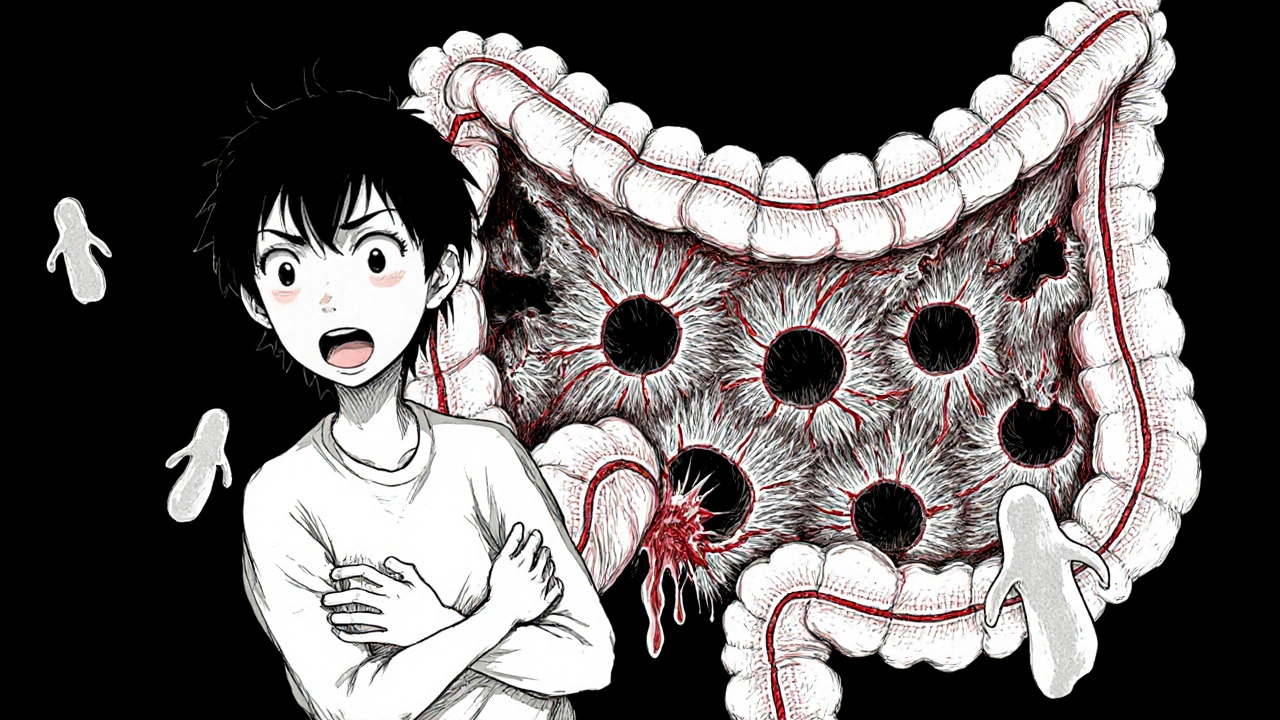Diverticulitis Treatment: What Works, What Doesn't, and What to Ask Your Doctor
When you hear diverticulitis, an inflammation of small pouches in the colon that can cause pain, fever, and digestive issues. Also known as inflamed diverticula, it's not just a "old person problem"—it's hitting younger adults too, often because of low-fiber diets and sedentary habits. Many people confuse it with diverticulosis, the presence of those pouches without inflammation. Diverticula are common—over half of people over 60 have them—but only about 20% ever develop diverticulitis. The difference? One is silent, the other hurts.
So what does diverticulitis treatment actually look like? It’s not one-size-fits-all. Mild cases? Often just rest, clear liquids, and maybe a short course of antibiotics, used to fight the bacterial infection triggering the inflammation. Oral antibiotics like metronidazole or ciprofloxacin are common, but not always needed. Recent studies show that for uncomplicated cases, many people recover just fine without them. Severe cases? Hospitalization, IV fluids, and sometimes surgery if there’s a perforation or abscess. The real game-changer? What you eat after the flare-up. A high-fiber diet isn’t just a suggestion—it’s your best defense against another episode.
And here’s the thing most doctors don’t stress enough: high-fiber foods, like beans, lentils, oats, broccoli, and whole grains. Fiber-rich diet doesn’t cause diverticulitis—it prevents it. For years, people were told to avoid nuts, seeds, and popcorn. That advice is outdated. No solid evidence links them to flare-ups. In fact, avoiding them might mean you’re missing out on vital fiber. The real trigger? Processed foods, red meat, and not drinking enough water. Your colon needs movement, and fiber gives it that push.
Recovery isn’t just about pills or diets—it’s about habits. If you’ve had one episode, you’re at higher risk for another. That’s why treatment isn’t just about calming the current flare-up. It’s about building a routine that keeps your gut healthy long-term. That means moving more, drinking water, and choosing whole foods over packaged ones. It’s not glamorous, but it works.
Below, you’ll find real comparisons and practical guides from people who’ve been there—whether it’s choosing between antibiotics, understanding what foods help most, or figuring out if surgery is really necessary. No guesswork. Just clear, tested info.
Can Amoxicillin Treat Diverticulitis? Benefits, Risks & Guidelines
Explore whether amoxicillin can treat diverticulitis, its effectiveness, dosage, risks, and when it might be used as an alternative to standard antibiotics.
read more